Overview
The article primarily aims to equip readers with essential insights for selecting a small electric fan, highlighting critical factors such as:
- Room size
- Airflow efficiency
- Noise levels
- Energy efficiency
- Aesthetics
- Portability
- Safety features
Each insight is meticulously supported by an analysis of how these factors impact performance and user experience, empowering consumers to make informed choices tailored to their unique needs and preferences.
Introduction
In a world where comfort converges with innovation, Gagner-Toomey Associates stands at the forefront of delivering cutting-edge cooling solutions meticulously designed for small spaces. Catering to a diverse range of industries, including Telecom, Automotive, and Medical, this company not only prioritizes advanced technologies but also champions a customer-centric approach to address unique needs.
As the demand for effective cooling solutions escalates, understanding how to select the appropriate fan becomes imperative. This article explores critical factors influencing the selection of small electric fans, including:
- Evaluating room size
- Airflow efficiency
- Considering noise levels
- Energy consumption
By delving into these elements, engineers and consumers alike can make informed decisions that enhance both comfort and efficiency in any environment.
Gagner-Toomey Associates: Innovative Cooling Solutions for Small Spaces
Gagner-Toomey Associates stands at the forefront of innovative temperature control solutions tailored for small areas, particularly within the following sectors:
- Telecom
- Automotive
- IoT
- Medical
- Networking
- IT/Data Center
- Storage
- Wireless
- Robotics
- Test & Measurement Equipment
- Consumer Products
Their commitment to excellence, combined with a customer-centric approach, showcases a diverse array of manufacturers that deliver cutting-edge temperature control technologies. With extensive experience in the electronics industry and a sales team boasting an average tenure of over 20 years, Gagner-Toomey Associates guarantees that customers receive the most effective and efficient cooling solutions available. Furthermore, they provide consultative services that empower engineers and designers to pinpoint the optimal solutions for their specific needs, establishing themselves as a trusted partner dedicated to understanding and fulfilling the unique requirements of each client.
Understand Room Size: Choose the Right Fan Dimensions
Selecting the appropriate small electric fan starts with precise measurements of the room’s dimensions. For spaces up to 100 square feet, fans with a diameter between 29 and 36 inches are optimal. Conversely, larger rooms necessitate fans with diameters exceeding 36 inches to ensure effective air circulation. Proper fan sizing is crucial, as it not only enhances temperature control but also prevents the unit from being overworked. HVAC professionals assert that a fan’s effectiveness is significantly influenced by room size; thus, understanding this relationship is essential for optimal performance. A well-sized small electric fan can improve airflow and maintain comfort levels, particularly in compact areas.
Gagner-Toomey Associates, a leading supplier of innovative cooling solutions, offers an extensive range of small electric fans that are battery-operated and low-power devices designed for performance, effectiveness, and low noise, making them ideal for electronic and automotive applications. Additionally, it is important to note that most bath ventilators are equipped with dampers that minimize the backdraft of cold air from outside, which can adversely affect overall performance. Furthermore, ENERGY STAR® certified ceiling fans are up to 60% more effective than traditional models, providing a benchmark for engineers when assessing fan performance.
Maintaining the fan in good condition and ensuring it operates in the correct direction can further enhance its ventilation capabilities. Insights from case studies, such as ‘Good Airflow for Ceiling Fans,’ emphasize that effective fan operation depends on factors including blade shape, pitch, size, motor performance, and installation height. By adhering to these guidelines and considering maintenance practices that bolster performance and longevity, engineers can make informed choices that lead to improved air circulation and energy conservation in compact spaces.
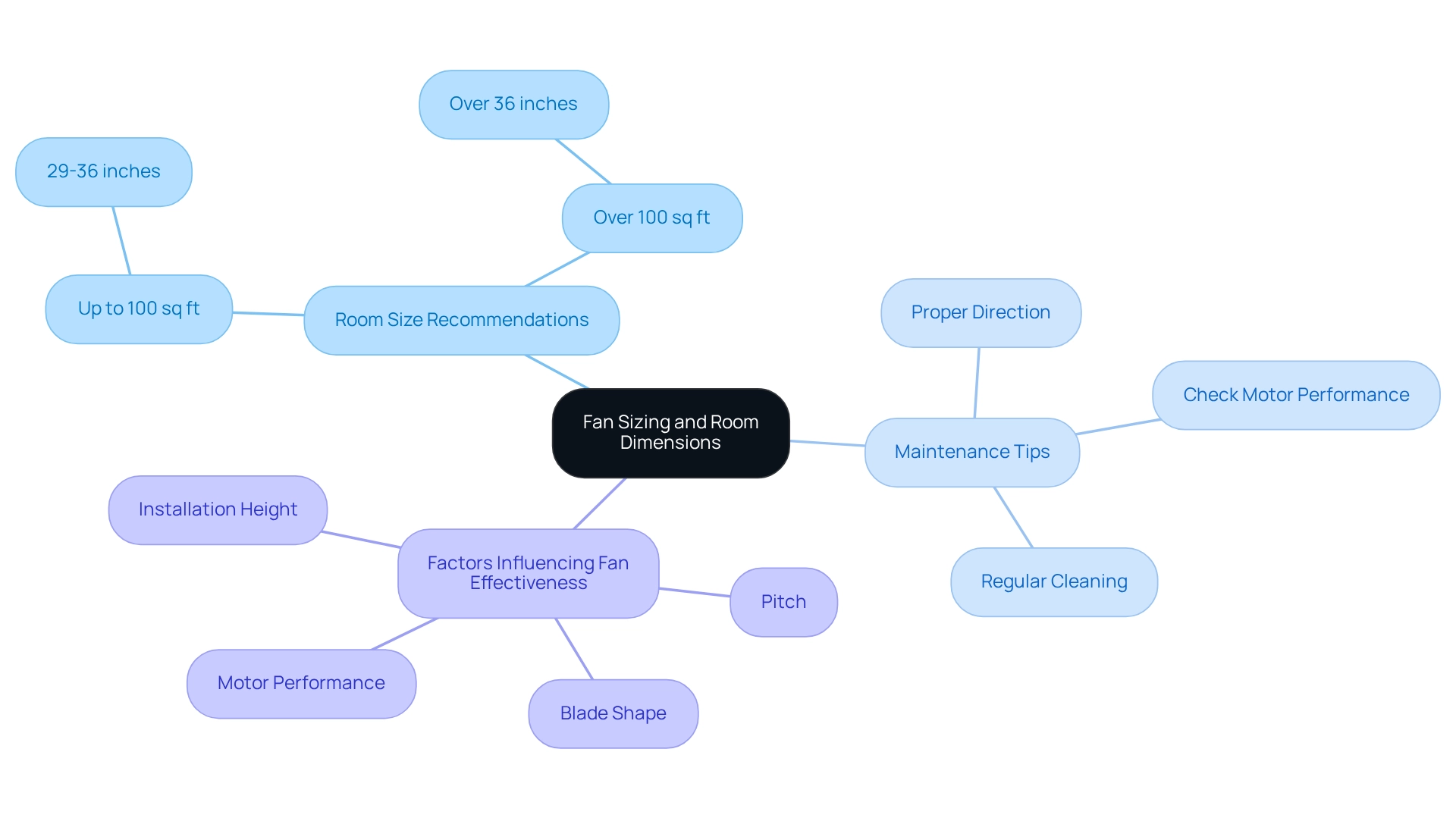
Evaluate Airflow Efficiency: Maximize Cooling Performance
Airflow performance, quantified in cubic feet per minute (CFM), is a critical metric for assessing a fan’s capability to deliver comfort. When choosing a small electric fan, it is essential to prioritize models with high CFM ratings, as these will deliver better cooling performance. For instance, devices designed with larger blades typically facilitate increased air circulation compared to their smaller counterparts, thereby enhancing overall performance.
In 2025, the focus on airflow efficiency remains paramount, with engineers increasingly acknowledging its influence on system performance. Recent innovations in ventilation technology, such as Deaton Engineering’s automated fixture capable of simultaneously controlling and testing up to 450 airflow devices, have resulted in models that not only achieve higher CFM ratings but also operate quietly, making them ideal for environments where noise reduction is essential.
To effectively evaluate CFM ratings, one must consider both the fan’s design and its intended application. High-performance fans frequently feature innovative blade geometries that optimize airflow while minimizing turbulence. This design approach is substantiated by case studies demonstrating significant advancements in temperature regulation through enhanced airflow effectiveness. For example, Epcon Industrial Systems underscores the necessity of understanding processes prior to unit installation, stating, “Because of the time you invested into understanding our process before the unit was built, the field commissioning of the unit after its installation could not have gone better.”
Engineers have noted that maximizing thermal performance hinges on meticulous fan design, with many advocating for a balance between CFM ratings and operational noise levels. As the industry progresses, remaining informed about the latest advancements in fan technology will be essential for making educated decisions that improve system efficiency. Furthermore, considering the broader context of air pollution control and related technologies can furnish engineers with insights into the environmental implications of cooling solutions.
Consider Noise Levels: Select a Quiet Electric Fan
When selecting a small electric fan, it is essential to consider its noise level, typically measured in sones. For a quieter experience, look for devices that operate at 50 decibels or lower. Many manufacturers now offer models specifically designed to minimize noise, making them ideal for bedrooms, offices, or any space where silence is paramount. By prioritizing these features, you can enhance your environment with a fan that meets both your cooling and quietude needs.
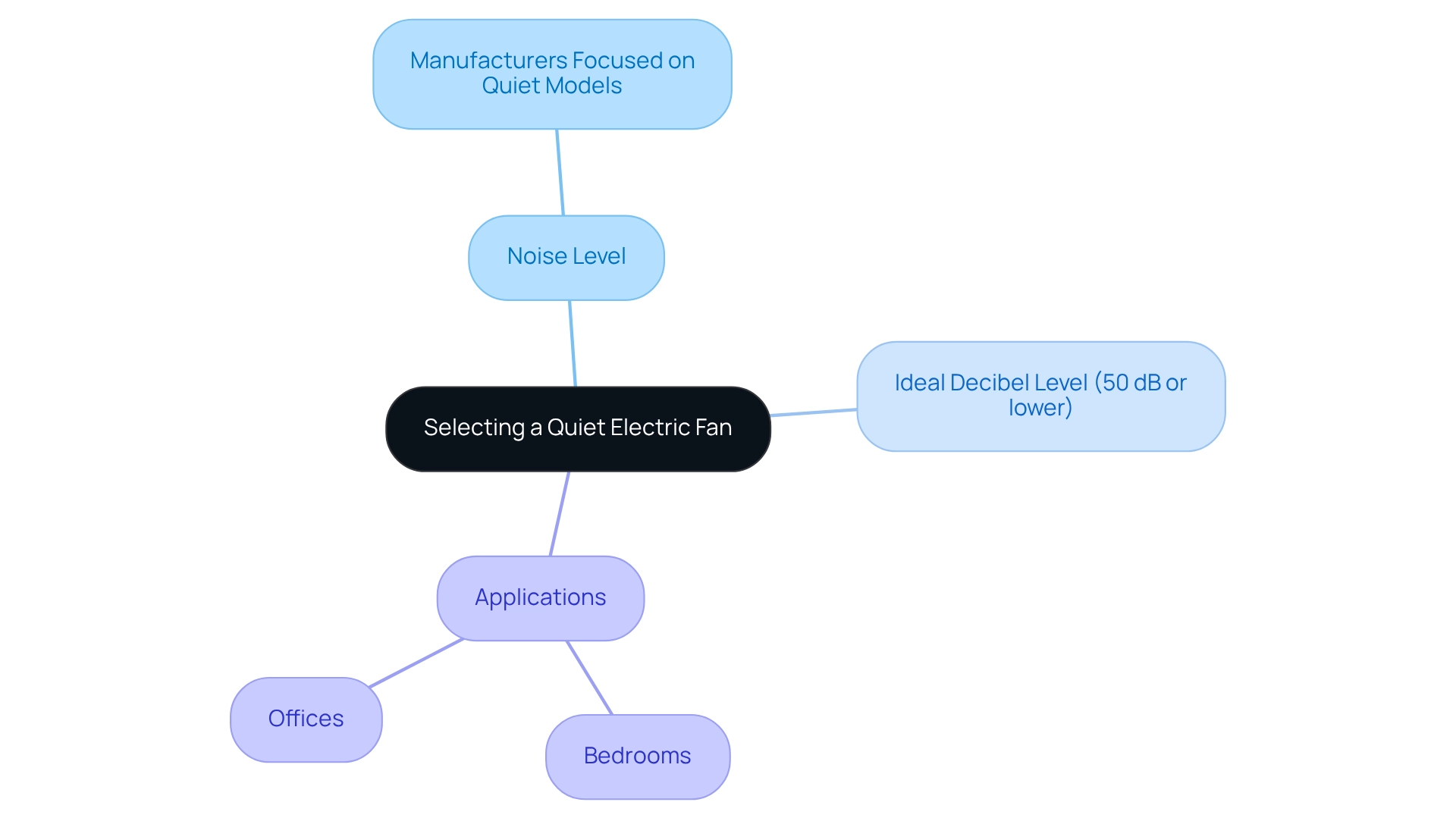
Explore Features: Speed Settings and Oscillation Options
When selecting a small electric fan, it is essential to prioritize models that offer multiple speed settings. This feature allows users to adjust airflow according to their individual comfort levels, thereby ensuring optimal temperature regulation. Furthermore, oscillation capabilities are crucial, as they enable the fan to distribute air more uniformly throughout a space, significantly enhancing cooling efficiency. For instance, devices equipped with oscillation can cover a broader area, making them suitable for both personal and communal environments. Some advanced models even incorporate remote controls, adding a layer of convenience for users.
As consumer preferences evolve, the demand for these features continues to rise, with many expressing a strong desire for devices that seamlessly merge functionality with aesthetic appeal. Notably, customers have shown interest in acquiring additional devices for family members, indicating a growing popularity for these products. In 2025, it is advisable to seek devices that not only meet these practical requirements but also enhance the overall user experience.
For example, the JISULIFE Handheld Mini Fan impressively provides 12-19 working hours on a single charge, showcasing both effectiveness and practicality. Francesca, a satisfied customer, remarked, “Utilissimo! La funzione ventilatore è ottima! Occupa pochissimo spazio in borsa ed esteticamente è molto carino. Indispensabile in viaggio.”
However, it is important to consider that some users have expressed mixed feelings regarding build quality, with varying opinions on durability. This highlights the necessity to assess not only features but also the overall quality of small electric fans.
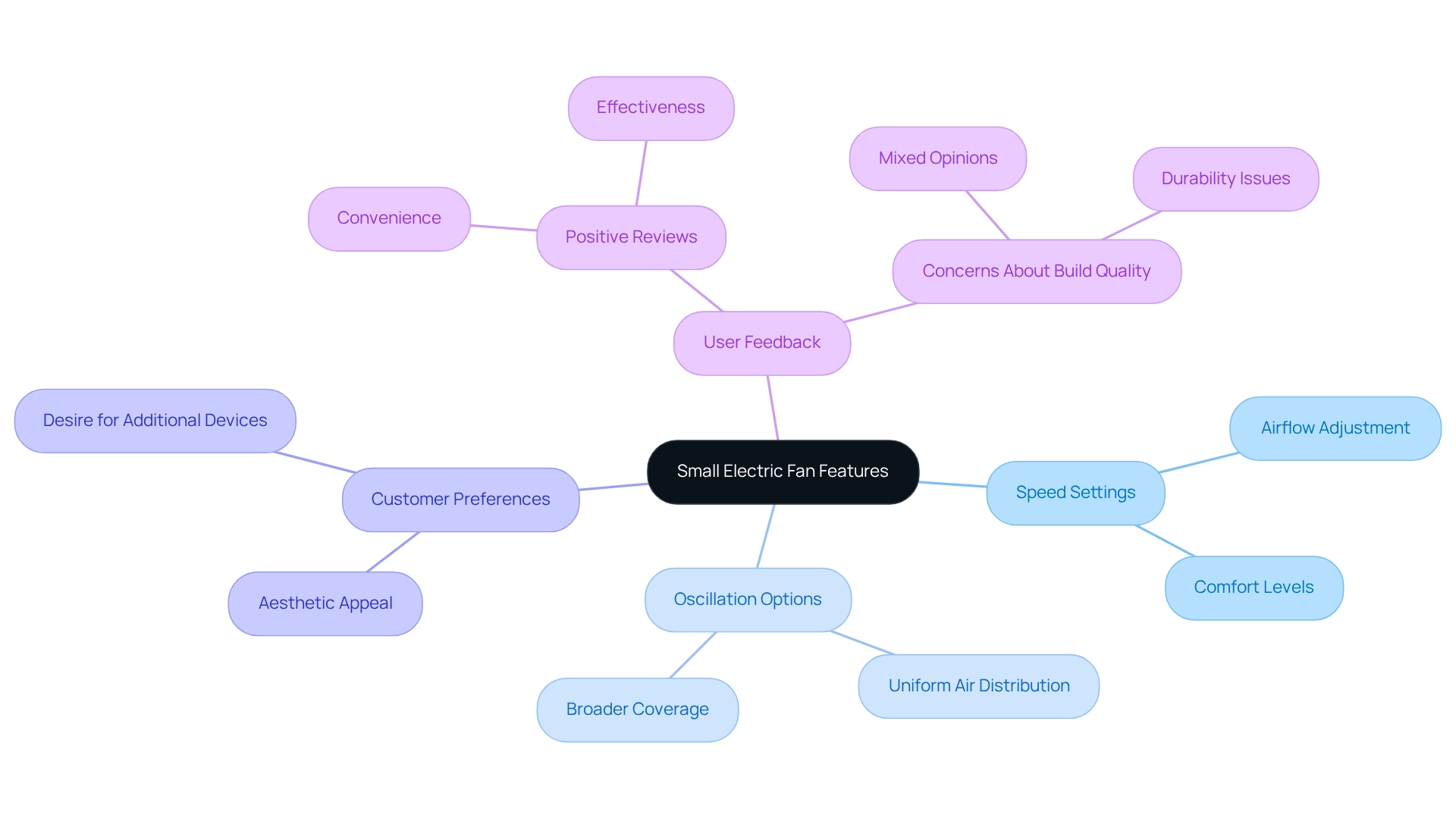
Prioritize Energy Efficiency: Save on Electricity Costs
When selecting a small electric fan, emphasizing energy conservation is crucial. Opt for models that carry the ENERGY STAR label, signifying compliance with rigorous energy efficiency standards. These small electric fans utilize considerably less electricity while providing equal or enhanced cooling efficiency compared to traditional models, ultimately leading to lower energy expenses. In fact, using a small electric fan that is ENERGY STAR rated can reduce electricity costs by as much as 30%, making it a prudent investment for both residential and commercial applications.
According to a 2023 study by the U.S. Energy Information Administration, the industrial sector accounted for 33% of total U.S. energy consumption, underscoring the necessity for energy-efficient solutions in this domain. Energy consultants further emphasize that selecting ENERGY STAR certified products not only benefits individual users but also contributes to broader energy conservation efforts, particularly in sectors characterized by substantial energy consumption. Moreover, the application of demand-controlled ventilation can further diminish energy waste during periods of low occupancy, thereby enhancing the effectiveness of these devices.
As the demand for energy-efficient solutions continues to escalate in 2025, integrating these devices into your projects can significantly enhance sustainability and operational efficiency. For instance, advanced control systems for commercial ceiling fans, such as those implemented in churches, facilitate tailored air circulation based on specific needs, illustrating the practical benefits of energy-efficient designs.
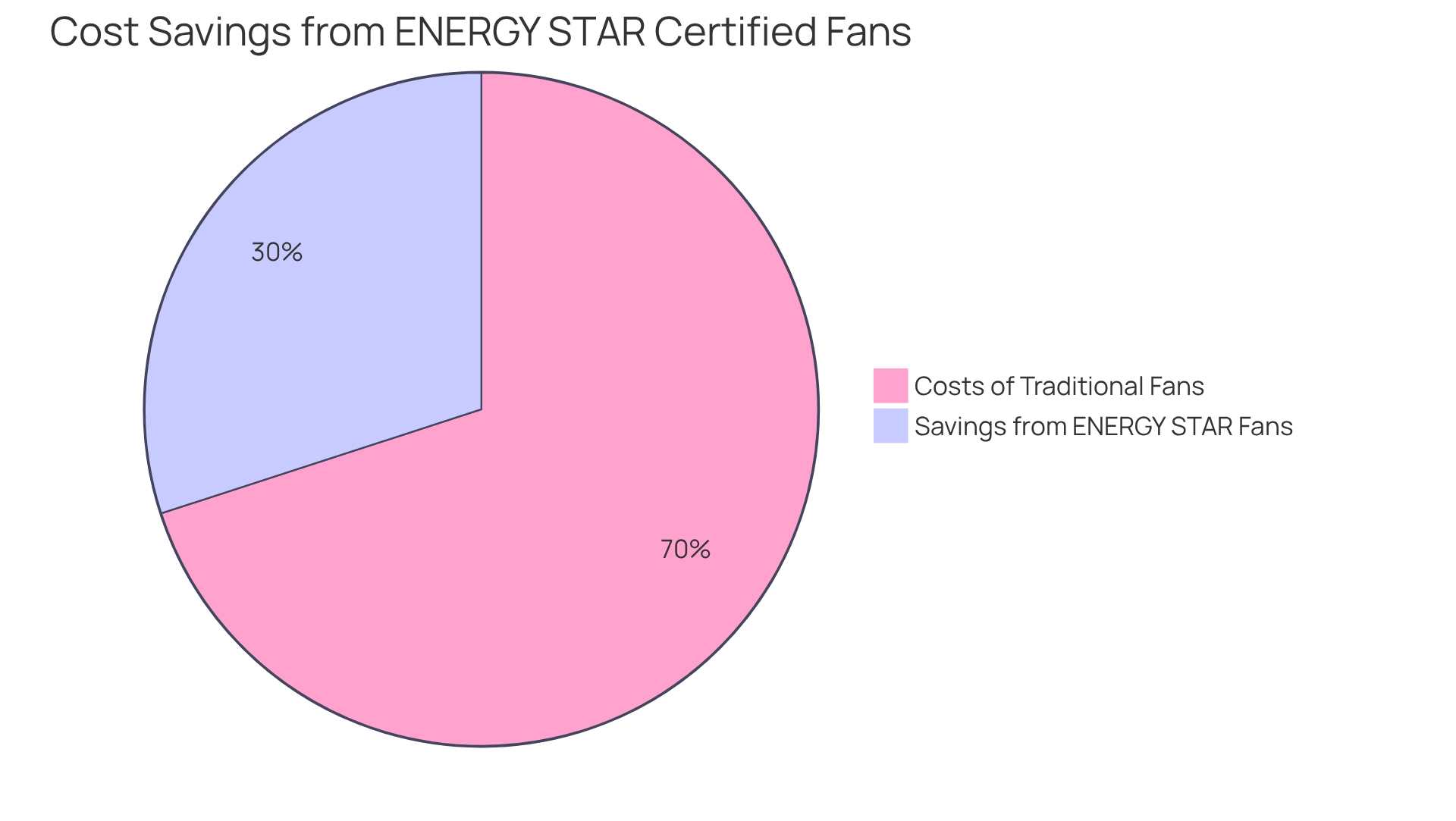
Match Aesthetics: Choose a Fan that Complements Your Decor
Selecting a compact electric fan that harmonizes with your home decor is essential for ensuring both functionality and style. With a vast selection of styles, colors, and finishes available, you can identify a fan that integrates seamlessly into your environment. Whether your taste leans towards a sleek modern aesthetic or a classic traditional appearance, there are options that not only deliver effective cooling but also enhance the overall visual appeal of your room.
Interior designers underscore the importance of decor compatibility in consumer purchasing decisions, asserting that a carefully chosen fan can significantly elevate the ambiance of a space. Trends indicate that ornamental compact electric devices are on the rise, with consumers increasingly favoring designs that resonate with their personal style. As we approach 2025, the market is witnessing a shift towards devices that blend functionality with visual allure, showcasing a diverse range of styles and finishes.
For example, appliances featuring intricate designs or unique color palettes can act as statement pieces, while minimalist selections can seamlessly integrate into contemporary settings. The burgeoning trend of smart fan technology, exemplified by the Hunter Fan Company’s introduction of their Hunter Express technology in July 2023, presents innovative designs that address both aesthetic and practical requirements, ensuring that your cooling solution is as stylish as it is efficient. When choosing a small electric fan, it is crucial to consider how its design complements your existing decor. Seek devices that either match or contrast effectively with your color scheme and furniture style. This deliberate approach not only enhances the visual appeal of your space but also contributes to a cohesive design narrative throughout your home. Moreover, with the Industrial Use segment accounting for over 42% of the total electric fan market in 2023, prioritizing functionality alongside aesthetics is imperative. Energy-efficient ceiling devices can aid in reducing electricity costs in commercial facilities, making them a prudent choice for both residential and business environments.
As the Residential Ceiling Appliance Market is projected to reach a value of 15.6 USD Billion by 2032, there are substantial growth opportunities in intelligent appliance technology and energy-efficient designs. This underscores the importance of selecting appliances that not only exhibit visual attractiveness but also function effectively, ensuring that your decision enhances both your decor and energy efficiency.
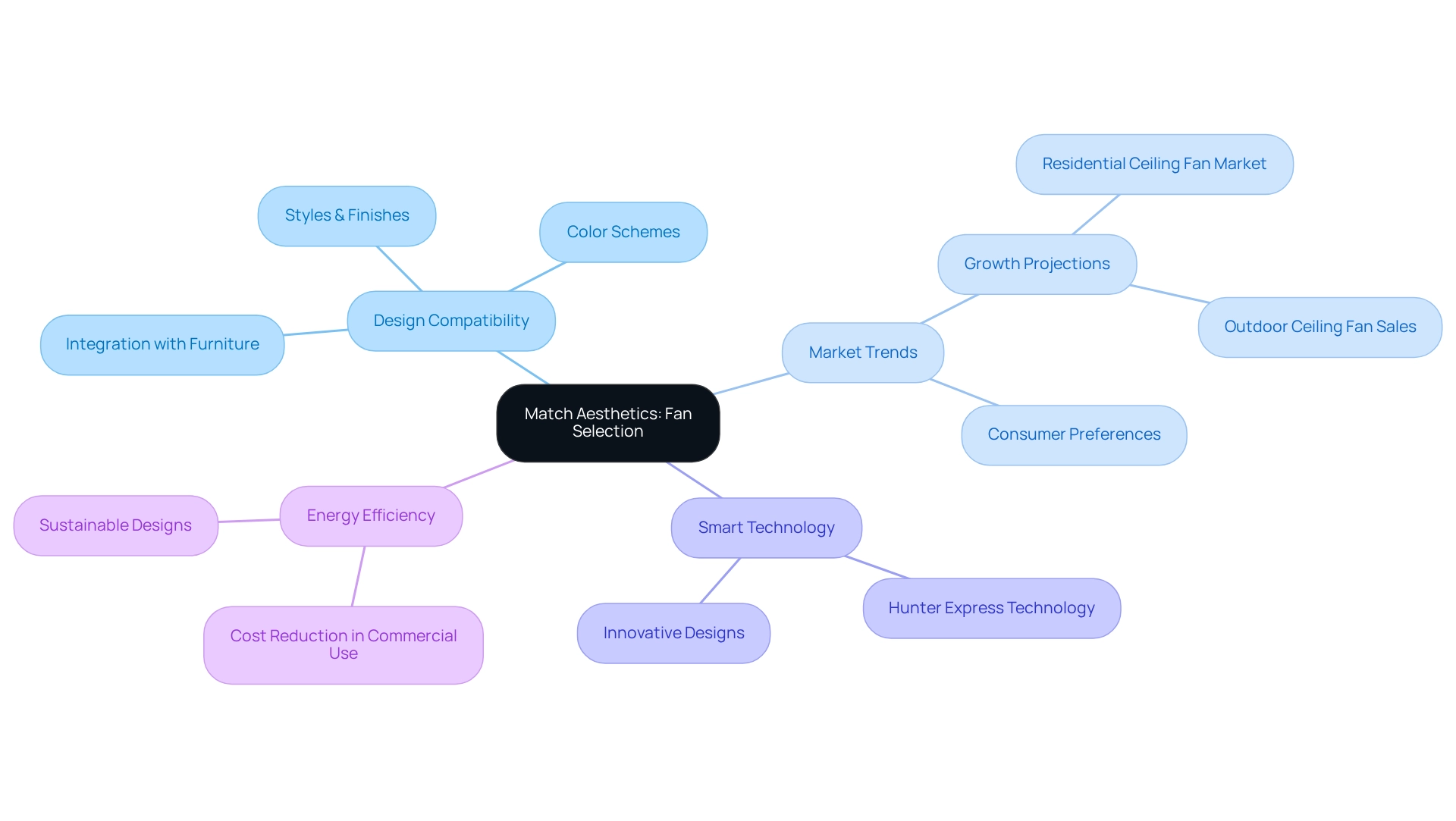
Ensure Portability: Select a Lightweight and Mobile Fan
When choosing a small electric fan, prioritizing weight and design is essential to enhance portability. Opting for lightweight models of small electric fans that feature handles or wheels facilitates effortless transport, particularly advantageous for users who wish to relocate their small electric fan between rooms or take it outdoors, ensuring comfort during warm weather.
Significantly, consumer preferences indicate a strong demand for devices that can easily accompany users during outdoor activities, with some models lasting an impressive 1 year and 5 months on a single battery charge. Francesca, a satisfied user, states, “Utilissimo! La funzione ventilatore è ottima! Occupa pochissimo spazio in borsa ed esteticamente è molto carino. Indispensabile in viaggio.”
Additionally, product designers emphasize the significance of lightweight construction, as it directly impacts user experience and mobility. As sustainability trends gain traction, innovative designs, such as eco-friendly devices made from bamboo and paper, are emerging, further enhancing the appeal of portable options. These eco-friendly materials not only contribute to sustainability but also align with the growing consumer preference for lightweight and mobile designs.
However, it is important to consider user feedback on durability; while some customers express concerns about the fan’s longevity, others find it well-made and reliable. Ultimately, a small electric fan should combine functionality with ease of transport, making it an indispensable companion for both home use and travel.
To assess the portability attributes of compact electric devices, consider their weight, design aspects such as handles or wheels, and user feedback on longevity.

Check Safety Features: Ensure a Secure Fan Operation
When selecting a small electric fan, safety is paramount. Essential features to consider include:
- A sturdy base that prevents tipping
- A protective grill designed to keep fingers away from the blades
- Automatic shut-off mechanisms that activate in the event of overheating
These safety measures not only enhance user comfort but also significantly reduce the risk of accidents. For instance, devices equipped with built-in thermal overload protection ensure reliable operation, while safety cables secure the unit to the ceiling structure, preventing potential hazards.
A case study on Hunter ceiling units highlights their engineering for exceptional performance and an industry-leading Limited Lifetime Warranty, underscoring the importance of safety features in ensuring long-term reliability. Recent statistics indicate that consumers are increasingly concerned about safety in electric fan operation, with many prioritizing models that incorporate these critical features. Indeed, one user indicated a 15 percent decrease in their utility bill after transitioning to a fan created with energy conservation and safety as priorities.
Additionally, HVLS units are specifically engineered to circulate a substantial amount of air at low speeds, enhancing the efficiency aspect of safety characteristics. As the industry evolves, the importance of robust safety mechanisms in small electric fans continues to be a key consideration for both manufacturers and consumers alike. Expert opinions from safety engineers emphasize that these mechanisms are crucial for secure fan operation, further validating the need for consumers to prioritize safety in their choices.
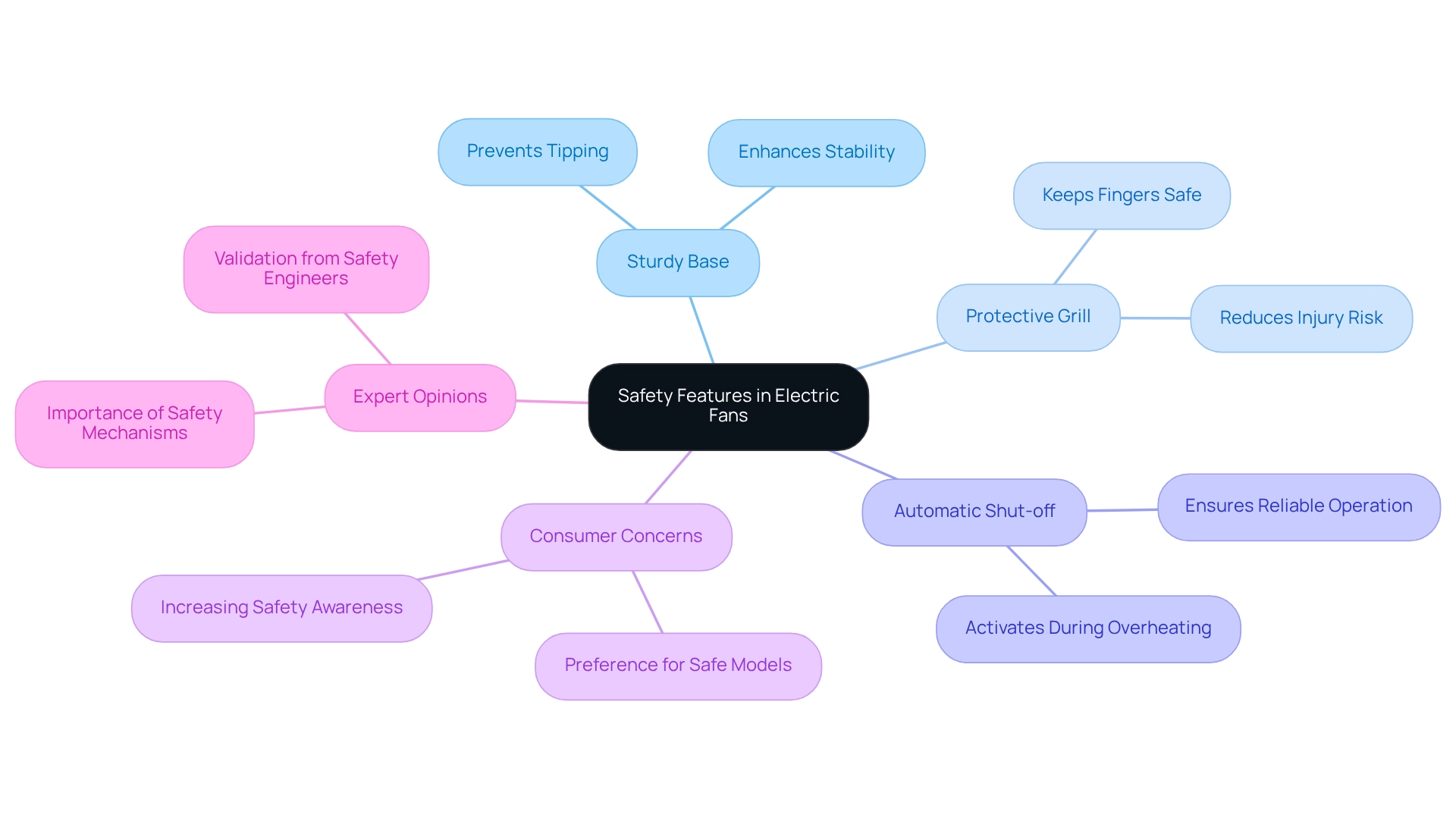
Conclusion
Understanding the intricacies of selecting the right small electric fan is essential for optimizing comfort and efficiency in any environment. This article has highlighted several critical factors that should guide the decision-making process, including the importance of room size, airflow efficiency, noise levels, and energy consumption. Each element plays a vital role in ensuring that the chosen fan not only meets the specific needs of the space but also operates effectively and sustainably.
The significance of matching the fan’s capabilities with the intended application cannot be overstated. By carefully evaluating room dimensions, airflow metrics, and energy efficiency ratings, both engineers and consumers can make informed choices that enhance overall performance. Furthermore, considering features such as speed settings, oscillation options, and aesthetic compatibility ensures that the selected fan delivers not only functionality but also complements the surrounding decor.
As the demand for effective cooling solutions continues to rise, prioritizing safety features becomes increasingly important. Selecting fans with robust safety measures not only protects users but also enhances the longevity and reliability of the product. Ultimately, making a well-informed decision when choosing a small electric fan leads to improved comfort, reduced energy costs, and a safer environment, aligning with the growing trend towards innovation and sustainability in cooling technologies.
Frequently Asked Questions
What sectors does Gagner-Toomey Associates cater to with their temperature control solutions?
Gagner-Toomey Associates provides innovative temperature control solutions for various sectors, including Telecom, Automotive, IoT, Medical, Networking, IT/Data Center, Storage, Wireless, Robotics, Test & Measurement Equipment, and Consumer Products.
What is the experience level of the sales team at Gagner-Toomey Associates?
The sales team at Gagner-Toomey Associates has an average tenure of over 20 years in the electronics industry.
How does Gagner-Toomey Associates support engineers and designers?
Gagner-Toomey Associates offers consultative services that help engineers and designers identify optimal cooling solutions tailored to their specific needs.
What factors should be considered when selecting a small electric fan for a room?
When selecting a small electric fan, it is important to measure the room’s dimensions. For spaces up to 100 square feet, fans with a diameter between 29 and 36 inches are recommended, while larger rooms require fans with diameters exceeding 36 inches.
Why is proper fan sizing important?
Proper fan sizing is crucial as it enhances temperature control and prevents the fan from being overworked, ensuring effective air circulation and maintaining comfort levels in compact areas.
What types of small electric fans does Gagner-Toomey Associates offer?
Gagner-Toomey Associates offers a range of small electric fans that are battery-operated, low-power, and designed for performance, effectiveness, and low noise, making them suitable for electronic and automotive applications.
What is the significance of CFM in fan performance?
CFM, or cubic feet per minute, is a critical metric for assessing a fan’s capability to deliver comfort. Models with high CFM ratings provide better cooling performance and air circulation.
How can fan design influence airflow efficiency?
Fan design, including blade shape and size, significantly impacts airflow efficiency. High-performance fans often feature innovative blade geometries that optimize airflow while minimizing turbulence.
What advancements are being made in ventilation technology?
Recent innovations in ventilation technology include automated fixtures capable of controlling and testing multiple airflow devices simultaneously, resulting in higher CFM ratings and quieter operation.
Why is it important for engineers to stay informed about fan technology advancements?
Staying informed about advancements in fan technology is essential for engineers to make educated decisions that improve system efficiency and consider the environmental implications of cooling solutions.

